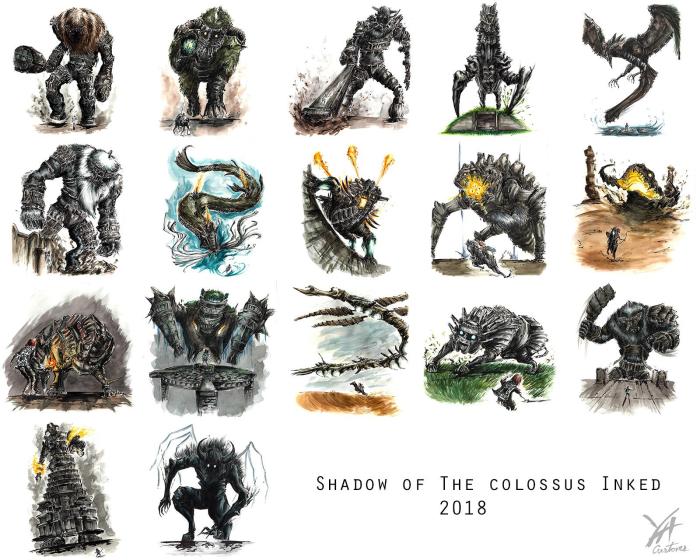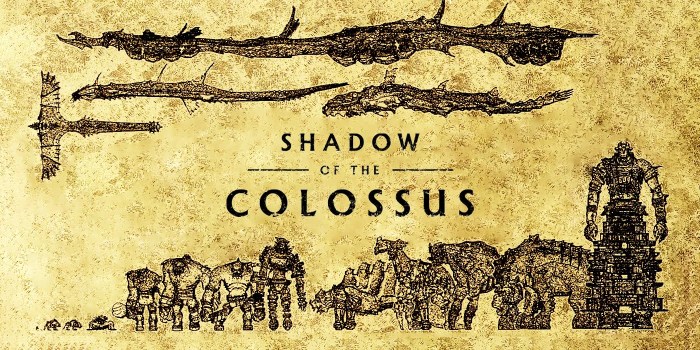Names of the colossi – Colossus of Rhodes, Colossus of Memnon, Colossus of Nero, Colossus of Constantine, Colossus of Barletta, Colossus of Amiens, Colossus of Appennino – these monumental sculptures have captivated imaginations for centuries. Embark on a journey to discover the stories behind these colossal figures, their significance, and the enduring legacy they have left upon art and history.
From the towering bronze sentinel of Rhodes to the enigmatic singing statues of Memnon, each colossus represents a unique chapter in the annals of human creativity and ambition. Their grandeur and symbolism have inspired awe and wonder, while their fates have become entwined with the rise and fall of civilizations.
Names of the Colossi
Colossi, colossal statues, have played a significant role in human history, embodying power, grandeur, and cultural significance. Throughout history, numerous colossi have been constructed, each with its own unique story and impact.
Colossus of Rhodes

The Colossus of Rhodes was a towering bronze statue of the Greek sun god Helios, erected in the city of Rhodes in the 3rd century BC. Standing approximately 108 feet tall, it was one of the Seven Wonders of the Ancient World.
The statue symbolized the city’s naval power and wealth and became a symbol of the island of Rhodes.
Significance and Symbolism
The Colossus of Rhodes represented the strength and prosperity of the Rhodians. Its imposing size and majestic presence symbolized the city’s dominance in the Mediterranean Sea. The statue also embodied the power of Helios, the sun god, who was the patron deity of Rhodes.
Historical Accounts and Legends
The Colossus of Rhodes was destroyed by an earthquake in 226 BC, but its legacy lived on through historical accounts and legends. According to one legend, the statue fell into the sea, where its bronze fragments were sold to a Jewish merchant.
Another legend tells of a giant statue that was so large that ships could sail between its legs.
Colossus of Memnon

The Colossus of Memnon is a pair of massive stone statues located in Luxor, Egypt. Built during the reign of Pharaoh Amenhotep III in the 14th century BC, these statues stand over 60 feet tall and depict the pharaoh seated on a throne.
Physical Characteristics and Architectural Style
The Colossus of Memnon is made of quartzite sandstone and features a distinct architectural style. The statues are seated on thrones, with their hands resting on their knees. Their heads are crowned with the double crown of Upper and Lower Egypt.
The statues are decorated with hieroglyphics and reliefs depicting scenes from Amenhotep III’s reign.
Religious and Cultural Significance
The Colossus of Memnon was built as a guardian statue for the mortuary temple of Amenhotep III. The statues were believed to represent the pharaoh’s divine authority and to protect his tomb from evil spirits.
The “Singing” Phenomenon
The Colossus of Memnon is known for its “singing” phenomenon. When the sun’s rays hit the statue at sunrise, it would produce a musical sound. This phenomenon was attributed to the statue’s construction and the thermal expansion of the stone.
Colossus of Nero

The Colossus of Nero was a colossal bronze statue of the Roman emperor Nero, erected in Rome in the 1st century AD. Standing over 100 feet tall, it was one of the largest statues ever created in antiquity.
Design and Construction
The Colossus of Nero was made of bronze and was built in sections that were assembled on site. The statue depicted the emperor as the sun god Sol Invictus, with a radiate crown and a globe in his hand.
Role in Roman Propaganda and Imperial Symbolism
The Colossus of Nero was a powerful symbol of the emperor’s authority and divine nature. It was placed in the atrium of Nero’s Golden House, a vast palace complex, and served as a reminder of the emperor’s power and glory.
Fate and Legacy
The Colossus of Nero was destroyed by fire in the Great Fire of Rome in 64 AD. However, its legacy lived on through its depiction in art and literature. The statue became a symbol of imperial excess and hubris.
Colossus of Constantine: Names Of The Colossi

The Colossus of Constantine was a colossal bronze statue of the Roman emperor Constantine I, erected in Rome in the 4th century AD. Standing over 30 feet tall, it was one of the largest statues of the emperor ever created.
Artistic Style and Iconography
The Colossus of Constantine was made of bronze and depicted the emperor in a seated position, holding a globe in his hand. The statue was decorated with reliefs depicting scenes from Constantine’s life and reign.
Political and Religious Motivations
The Colossus of Constantine was erected to celebrate the emperor’s victory over his rival Maxentius at the Battle of Milvian Bridge. The statue also served as a symbol of Constantine’s conversion to Christianity and his role as the first Christian emperor.
Impact on the Development of Christian Art, Names of the colossi
The Colossus of Constantine had a significant impact on the development of Christian art. The statue’s depiction of the emperor in a seated position became a common motif in Christian iconography, representing the authority and power of Christ.
FAQ
What is the tallest colossus?
Colossus of Rhodes, estimated to be over 100 feet tall.
Which colossus is known for its “singing” phenomenon?
Colossus of Memnon.
What material was used to create the Colossus of Nero?
Bronze.
What is the significance of the Colossus of Constantine?
It marked the shift from paganism to Christianity in the Roman Empire.
Where is the Colossus of Barletta located?
In the southern Italian city of Barletta.
